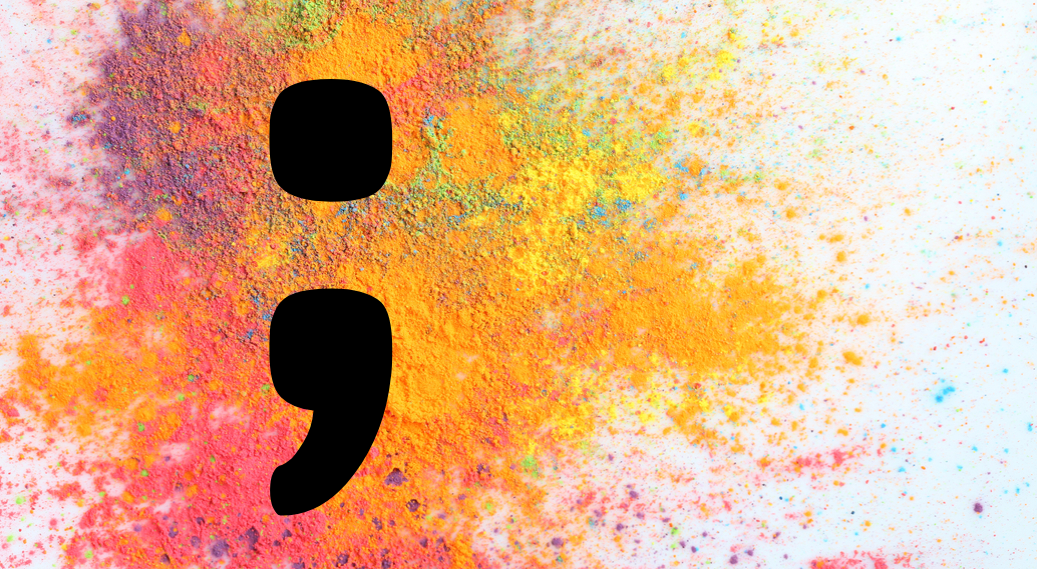Semicolons (;) are basic as a dot above a comma. Does that mean you can use it as one? Don’t despair. However, do not be discouraged by this punctuation. After all, that cunning blinking emoticon of the eyes can’t be wrong. 😉
How to Use a Semicolon Correctly?
A common use of a semicolon is to join two independent sentences without use and a conjunction such as and.
Do you use a capital letter after the semicolon? The general answer is no. The semicolon should be followed by a capital letter if it is a proper noun or abbreviation
Correct – We can go to the museum to do some research; Mondays are pretty quiet there.
Remember that semicolons cannot be replaced by commas or periods. However, it sits in the middle: stronger than a comma, but less likely to share a dot. Sounds silly to us.
1. Semicolons Connect Related Independent Clauses
You can use a semicolon to include two adjacent independent clauses. Let’s put it another way. The group of words that follow the semicolon must form a complete sentence, the group of words that follow the semicolon must form a complete sentence, and both sentences must have a close, logical connection:
Correct –
- I ordered a cheeseburger for lunch; life’s too short for counting calories.
- Money is the root of all evil; I don’t believe the reverse is necessarily true.
- Martha has gone to the library; Andrew has gone to play soccer.
Note that the letter after the semicolon is not a capital letter. Both of the above examples consist of two complete, grammatically correct sentences. Yes, that means there are a total of six sentences – and a semicolon, but two capital letters. This is exactly why you cannot replace a comma with a semicolon. Using a comma instead of a semicolon in the sentences above will result in a comma division. And there is no pain like comma comma.
2. Delete the Conjunction When You Use a Semicolon Between Two Independent Clauses
A semicolon is not the only thing that can combine two independent sentences. Connections (it’s your a, but, a os) can do that too. But you do not have to use a semicolon and a hyphen. I mean, if you use a semicolon, you use it instead of ands, buts, or ors; you don’t need both. Here’s a note: if you use a comma and an “a” to combine two related ideas, imagine the expression (you know the top of the semicolon) as a replacement for “a.”
Correct –
- I saw a magnificent albatross, and it was eating a mouse.
- I saw a magnificent albatross; it was eating a mouse.
To avoid commas, you need a comma and an object. This something can be the right combination or a dot that makes the comma a semicolon. If semicolons can join independent clauses that have a dot or an agreement between them, it means that they can also show the difference. It is part of the same rule, but the reference in question is “but” instead of “and”. In other words:
Correct –
This is part of the same rule; the conjunction in question is “but” instead of “and.”
To summarize, the semicolon connects two related ideas by reducing the gap between ideas in two separate sentences or by replacing the link between two ideas. This is also to show the difference: the fact that two ideas are contradictory or contradictory does not mean that they are not closely related, and therefore they get a semicolon.
3. Use Semicolons in a Serial List
If the items are long or contain punctuation, you can use semicolons to divide the items in the list. In these cases, the semicolon helps readers to trace the distribution between the objects.
Correct
- I need the weather statistics for the following cities: London, England; London, Ontario; Paris, France; Paris, Ontario; Perth, Scotland; Perth, Ontario.
- My plan included taking him to a nice—though not necessarily expensive—dinner; going to the park to look at the stars, which, by the way, are amazing this time of year; and serenading him with my accordion.
Again us: we currently have semicolons to join two independent clauses; replacement of the conjunction (if it shows similarity, eg “a” or opposition, eg “but”); long, comma loving list. Yes, it is one now.
4. Use Semicolons With Conjunctive Adverbs
When you have a conjunctive adverb linking two independent clauses, you should use a semicolon. Some common conjunctive adverbs include moreover, nevertheless, however, otherwise, therefore, then, finally, likewise, and consequently.
Correct –
- I needed to go for a walk and get some fresh air; also, I needed to buy milk.
- Reports of the damage caused by the hurricane were greatly exaggerated; indeed, the storm was not a “hurricane” at all.
- The students had been advised against walking alone at night; however, Cathy decided walking wasn’t dangerous if it was early in the evening.
- I’m not all that fond of the colors of tiger lilies; moreover, they don’t smell very good.
These words sometimes occur in other parts of the sentence; therefore, the semicolon is valid only if the subjunctive helps to be joined by two independent clauses. (See what we did there?) This conjunctive adverb is similar to a conjunctive rule. In either case, make sure that two ideas as independent sentences can become sentences in themselves. If so, then you are good at grammar down to the semicolon.
5. Use a Semicolon to Give a Wily Wink
Emoticons can never replace a strong knowledge of English. But they can be sure that they will smell it at any moment. 😉 A semicolon is a good punctuation mark that you can have in your back pocket. Or on top of your smile in parentheses. So whether you’re using it to create a good complex sentence or to give someone a glimpse, now you know how to do it.
